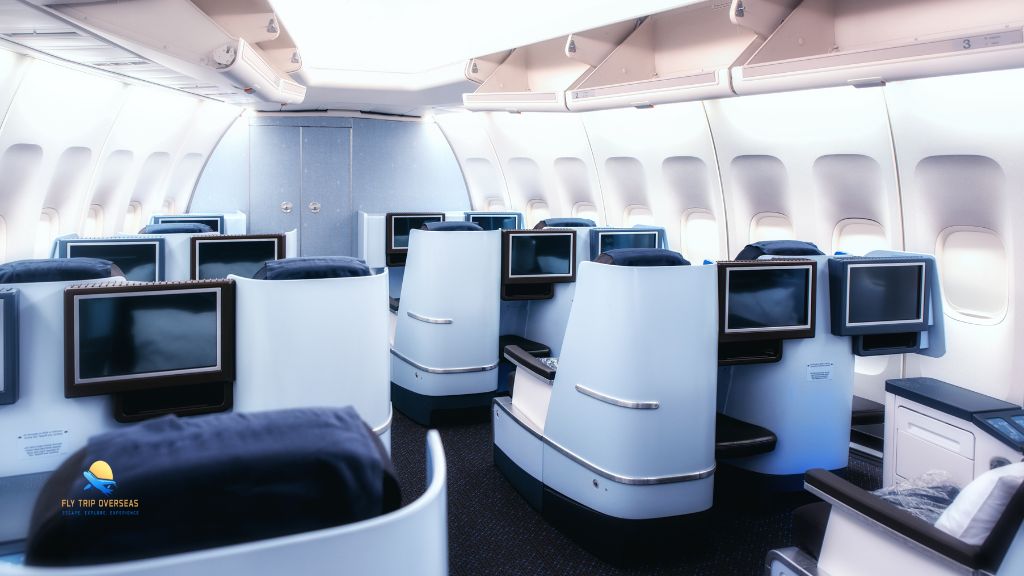Over the past decade, the travel industry has undergone a remarkable transformation. The emergence of online travel agencies (OTAs) has revolutionized how travelers research, plan, and book their journeys. Today, platforms like Booking.com, Expedia, Trip.com, and hundreds of regional players dominate the travel booking landscape, offering convenience, competitive pricing, and vast choices. As we look ahead to the period between 2025 and 2033, the online travel agency market is projected to expand significantly, fueled by technology adoption, changing consumer behavior, and the continued rise of digital-first travelers.
The next eight years are poised to bring even more dramatic shifts to the OTA ecosystem. From AI-driven personalization to blockchain-powered payments, the industry will experience both opportunities and challenges. This detailed report explores market size, growth factors, regional trends, competitive dynamics, emerging technologies, and future forecasts, providing valuable insights for stakeholders in the travel sector.
The global online travel agency (OTA) market is poised for rapid growth, potentially doubling in size over the next decade. For example, Grand View Research valued the OTA sector at about $612.95 B in 2024 and projects it to reach $1,003 B by 2030 (CAGR ~8.6%). Global Market Insights estimates ~$253.2 B in 2024 growing to $533.7 B by 2034 (7.9% CAGR). Dataintelo reports $305.23 B in 2023 rising to $534.35 B by 2032 (6.42% CAGR). Another analysis forecasts $64.91 B in 2024 to $154.44 B by 2033 (10.11% CAGR), underscoring the strong expansion trend.
- Mobile Bookings: Around 68% of OTA reservations are made on mobile devices, highlighting the mobile-first shift.
- AI & Personalization: OTAs are increasingly using AI-driven chatbots and recommendation engines. For example, Expedia’s 2024 launch of an AI travel assistant improved planning speed.
- Loyalty & Bundles: Over 57% of travelers prefer OTA package deals, and loyalty programs can boost retention by ~52%.
- Regional Leadership: North America holds ~34% of global OTA revenue (driven by app-based booking and loyalty rewards), while Asia-Pacific (~30%) is the fastest-growing market due to rising mobile adoption.

Online Travel Agency Market Segmentation
- By Model: B2C platforms dominate (~73% share), as individual travelers favor OTAs. B2B (corporate/travel-agent services) makes up the rest (~27%).
- By Service: Flight bookings lead (~38% of OTA sales), thanks to easy price comparison. Hotel reservations account for ~26%, and multi-service travel packages (flights + hotels) ~17%.
- Other Services: Activity bookings (tours, experiences) are growing (~14%), while add-ons (car rentals, visas) comprise ~5% of OTA transactions.
Regional Insights
In North America, online bookings are especially prevalent. For example, the U.S. OTA market ($67.7 B in 2024) comprises over 75% of North America’s OTA revenue. Overall, North America leads globally (≈34% of OTA market) due to high internet penetration, widespread smartphone use, and robust loyalty programs.
- Europe: ~28% of the market, driven by cross-border travel and sustainable-tourism preferences.
- Asia-Pacific: ~30% of the market, expanding rapidly as emerging economies and travelers embrace mobile-first booking.
- Middle East & Africa: ~8% of the market, boosted by leisure and religious tourism.
1. Market Overview
The online travel agency market has grown steadily since the early 2000s, but its acceleration post-2020 has been unprecedented. Increased internet penetration, affordable smartphones, and the growing comfort of making financial transactions online have led to a surge in online bookings.
In 2025, the market is estimated to be valued at over USD 800 billion globally, with a projected compound annual growth rate (CAGR) of 9–11% through 2033. By the end of the forecast period, the industry could surpass USD 1.6 trillion in value.
This growth is supported by multiple factors:
- A young, tech-savvy population in emerging economies
- An increased preference for flexible booking policies post-pandemic
- The integration of artificial intelligence and machine learning into booking platforms
- Partnerships between OTAs and airlines, hotels, and local tour operators
Notably, the Asia-Pacific region is expected to be the fastest-growing market due to the rising middle class, improved internet access, and increased leisure travel demand.
2. Key Growth Drivers
2.1 Mobile & App-Based Bookings
One of the most significant changes in traveler behavior is the shift to mobile. In 2025, over 70% of OTA bookings are expected to come from mobile devices, a figure that will likely increase as apps become more user-friendly and integrated with social media. Push notifications, last-minute deals, and AI-powered suggestions make mobile bookings more appealing than traditional desktop reservations.
2.2 Artificial Intelligence & Chatbots
AI is reshaping how OTAs interact with customers. From personalized recommendations based on past travel behavior to chatbots that handle queries instantly, artificial intelligence enables OTAs to provide a customized booking experience. AI can also predict pricing trends, helping travelers choose the best time to book.
2.3 Social Media Integration
Travel inspiration increasingly comes from Instagram, TikTok, and YouTube. OTAs are leveraging social media advertising, influencer partnerships, and integrated booking links to convert inspiration into reservations. This integration makes the booking journey seamless, allowing users to go from watching a travel video to booking a trip in just a few clicks.
2.4 Flexible & Hybrid Travel
The rise of remote work has created a new segment of travelers—those who combine work and leisure, often referred to as “digital nomads.” OTAs are adapting by offering long-stay discounts, co-working space listings, and flexible cancellation policies to cater to this growing market.

3. Regional Market Analysis
3.1 North America
North America remains one of the largest OTA markets, with high adoption rates of travel apps and online booking platforms. The U.S. and Canada see strong domestic travel demand and an increasing number of travelers seeking international experiences. Sustainability and eco-friendly options are becoming major selling points in this region.
3.2 Europe
Europe’s OTA market is driven by its rich cultural diversity and proximity of countries, making multi-destination travel popular. However, regulatory challenges, particularly regarding data privacy (GDPR), are shaping how OTAs collect and use customer information. European travelers are also more inclined toward sustainable travel options, prompting OTAs to list eco-certified accommodations.
3.3 Asia-Pacific
The Asia-Pacific (APAC) region is expected to be the fastest-growing OTA market from 2025 to 2033. Countries like China, India, Indonesia, and Vietnam are seeing rapid urbanization, increased disposable income, and a young population eager to explore. Mobile-first booking strategies are essential here, as a significant portion of the population bypasses desktop entirely.
3.4 Middle East & Africa
The Middle East is leveraging tourism diversification strategies, especially in countries like the UAE and Saudi Arabia. Mega-events and large-scale tourism projects are attracting international visitors. Africa, while still emerging in the OTA space, presents opportunities in safari tourism, beach destinations, and cultural heritage travel.
4. Competitive Landscape
The OTA industry is highly competitive, with a few global players dominating market share but numerous regional agencies carving out niches.
Major players include:
- Booking Holdings (Booking.com, Priceline, Kayak)
- Expedia Group (Expedia, Hotels.com, Vrbo)
- Trip.com Group (Trip.com, Skyscanner)
- MakeMyTrip (India-based leader)
- Agoda (Asia-focused platform)
Regional OTAs succeed by offering localized content, currency support, and language options, giving them an edge in markets where global brands may struggle to adapt. For instance, MakeMyTrip in India offers regional payment gateways and tailored promotions for local festivals.
5. Emerging Technology Trends
5.1 Voice Search Bookings
With the rise of smart speakers and voice assistants like Alexa, Google Assistant, and Siri, voice search is becoming a new booking channel. OTAs are optimizing their platforms to handle natural language queries like “Find me the cheapest flight to Bali next month.”
5.2 Blockchain for Payments
Blockchain technology is making travel payments faster, more secure, and transparent. Cryptocurrency acceptance is growing, allowing travelers to bypass currency conversion fees.
5.3 Dynamic Pricing Models
AI-powered algorithms adjust prices in real time based on demand, competitor pricing, and even weather forecasts. This means travelers could see fluctuating rates within hours.
5.4 Virtual Reality (VR) Tours
VR is allowing travelers to “try before they buy” by exploring hotel rooms, destinations, and attractions in immersive 360-degree views before booking.

6. Challenges Facing the OTA Market
While opportunities are vast, OTAs face several challenges:
- Cybersecurity Threats – The more transactions happen online, the greater the risk of data breaches.
- Regulatory Hurdles – Varying laws around data privacy, taxation, and consumer rights create complexity for global OTAs.
- High Competition – With so many booking options, profit margins can be thin.
- Supplier Dependence – OTAs rely on airlines, hotels, and activity providers, meaning disruptions in these sectors can impact bookings.
7. Opportunities for Growth
Despite challenges, the future for OTAs remains bright. Opportunities include:
- Expanding into niche travel segments such as adventure tourism, eco-tourism, and medical tourism.
- Partnering with local influencers and travel bloggers to target specific demographics.
- Developing AI-powered loyalty programs that offer personalized rewards.
- Leveraging big data to predict travel trends and create targeted marketing campaigns.
8. Future Outlook (2025–2033)
By 2033, the online travel agency market will be almost unrecognizable compared to today. The booking experience will be hyper-personalized, AI assistants will handle entire trip itineraries, and blockchain could make transactions near-instant.
Key predictions include:
- Over 85% of OTA bookings will happen on mobile apps.
- VR and AR will become standard tools for destination marketing.
- Sustainability certifications will be as important as star ratings for accommodations.
- Competition will drive OTAs to offer more value-added services like insurance, visa processing, and local experience bookings.
The online travel agency market is on a trajectory of sustained growth between 2025 and 2033. Success will depend on an OTA’s ability to embrace technology, adapt to regional market needs, and provide a personalized, secure, and flexible booking experience. Stakeholders—from global giants to regional startups—must remain agile, innovative, and customer-centric to thrive in this evolving landscape.
For travelers, the coming years promise more choice, better deals, and richer experiences, all accessible from the palm of their hand.
Challenges & Outlook
Despite growth, OTAs face hurdles. The market is highly fragmented, with ~61% of bookings split across many platforms, which raises customer acquisition costs and weakens loyalty. Data privacy and security remain concerns: roughly 46% of travelers hesitate to share payment info online. Nevertheless, continued innovation (AI, AR previews, subscription models) and rising global travel demand are expected to drive OTA expansion through 2033.

FAQs
Q1: What is an Online Travel Agency (OTA)?
A: An OTA is a digital platform that lets consumers book travel services (flights, hotels, car rentals, vacation packages) online. OTAs earn revenue via commissions from service providers and booking fees. Major examples include Booking.com, Expedia, and Airbnb.
Q2: How large is the global OTA market?
A: Estimates vary. For 2024, one report cites ~$253B and another ~$305B. Regardless, all agree it’s in the hundreds of billions and growing. Forecasts range from ~$154B by 2033 (CAGR ~10%) up to ~$534B by 2032 (CAGR ~6.4%), reflecting different methodologies.
Q3: What is the CAGR of the OTA market (2025–33)?
A: Projections range about 6–10%. For example, one analysis gives 6.42%, another 7.9%, and yet another 10.11%. The variation underscores how scope (services included) affects estimates, but all predict solid growth.
Q4: What trends are driving OTA growth?
A: Key trends include surging mobile use (most OTA bookings now via smartphones), AI-driven personalization (chatbots, dynamic pricing), demand for bundled packages and loyalty rewards, and interest in sustainable/experiential travel (eco-friendly options, AR previews). These factors enhance convenience and customer engagement.
Q5: Who are the major OTA companies?
A: Leading OTAs include Booking Holdings (Booking.com, Agoda), Expedia Group, Airbnb, MakeMyTrip (India), TripAdvisor, and others. These firms command large market shares (e.g. Booking.com and Expedia together account for roughly half of global OTA bookings) by offering wide inventories and tech-driven services.
Q6: How have mobile devices impacted OTAs?
A: Dramatically. Over two-thirds of OTA bookings occur on mobile, a share expected to rise. Mobile apps offer on-the-go booking, app-only deals, and push notifications. OTAs continuously improve app UX (one-touch booking, voice search) to capture this trend and reduce booking friction.
Q7: How do OTAs make money?
A: Mostly via commissions from airlines, hotels, etc., plus booking fees. OTAs aggregate inventory to give users choice and then earn a percentage on each reservation. They also drive revenue through advertising, premium subscription plans, and partnerships.
Q8: How did COVID-19 affect the OTA industry?
A: The pandemic initially devastated travel, causing a steep revenue drop. However, the industry has since rebounded strongly. By 2022-2023, travel rebounded to near pre-pandemic levels (UNWTO: ~99% recovery), boosting OTA bookings as consumers resumed flying and lodging.
Q9: What challenges do OTAs face?
A: Besides fragmentation and security concerns, OTAs face fierce competition. Many platforms offer similar deals, so over half of customers compare multiple sites before booking. This forces OTAs to differentiate via technology (AI/AR) and services (loyalty perks, personalized deals).
Q10: What is the future outlook for OTAs?
A: The OTA market is expected to keep growing as global travel demand and digital adoption rise. Innovations like AI trip planners, augmented-reality previews, voice booking, and sustainable travel options will continue enhancing the user experience. Many OTAs are expanding into emerging regions (especially Asia-Pacific) and niche markets (luxury, eco-tourism), suggesting robust growth through 2033.
